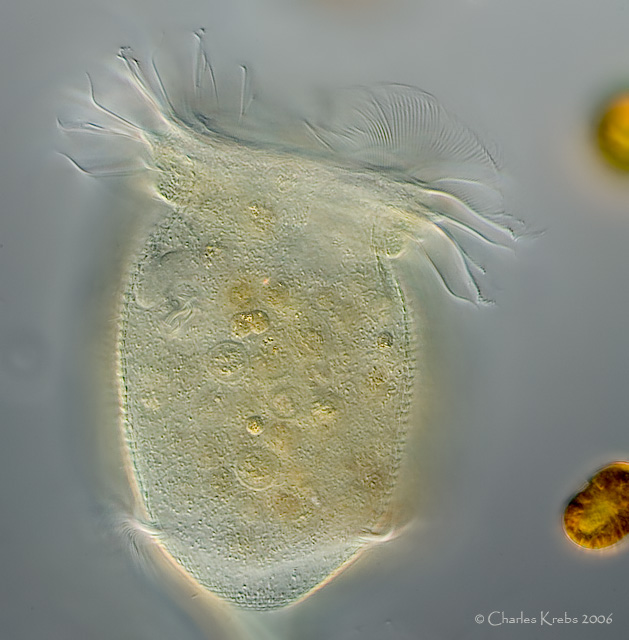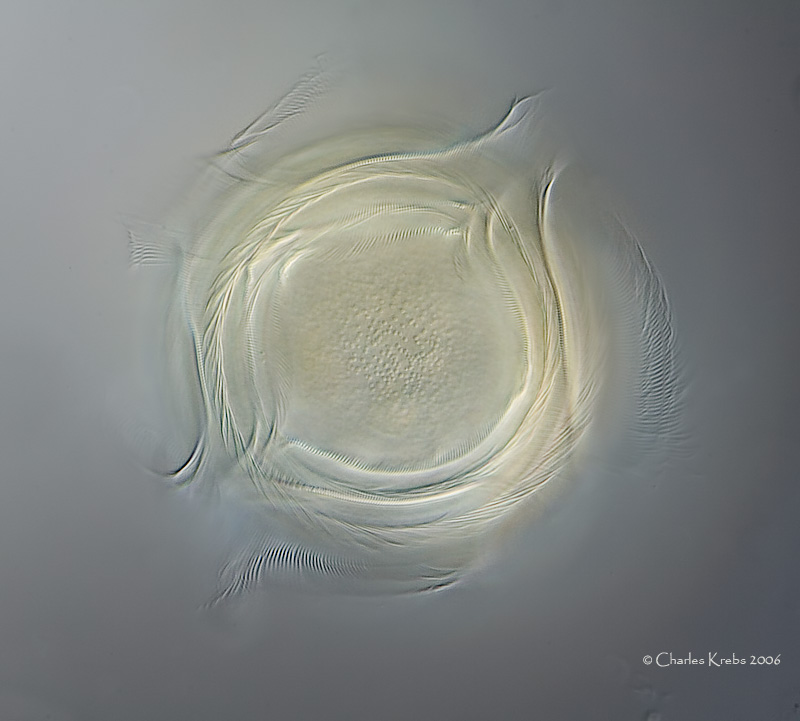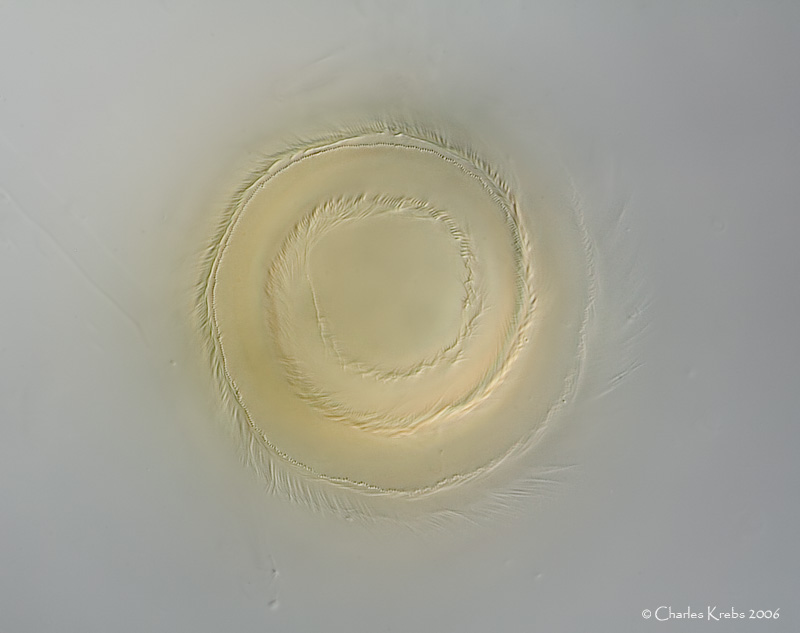This one is now a telotroch, having grown the rear ring of cilia, and detached itself from the stalk. The first image is a "side" view, and provides the overview. The other two are quite abstact... but for me very interesting.
In the second image the Campanella is positioned so that the front of the cell faces the cover slip. This view, when photographed with electronic flash, really provides a nice look at the rings of feeding cilia in action. I'm always fascinated by the beauty and flow of this motion.
In the third shot I have pulled the focus a little higher so that all that can be seen is the "tips" of some of the cilia. This is the image that really interests me. This is the first time I have seen a spiral pattern that, when you think about it, makes perfect sense! After all, the purpose of the cilia is not to make pretty patterns for photomicrographers, but to direct food to the mouth area where it is crammed into food vacuoles. This simply cannot be seen at all while viewing, since the motion is so extremely rapid that it is just a blur. It is only because of the "action- stopping" ability of the flash that it is seen here.
Canon 350D. Olympus 40X S Plan Apo. Olympus 1.67X NFK photo-eyepiece. DIC with electronic flash.





